Recipients of the 2024 ZEKE Awards
SDN is proud to announce the winners of the 2024 ZEKE Awards.
ZEKE Award for Documentary Photography
SDN awards one photographer the ZEKE Award for Documentary Photography to recognize their success in documentary photography and visual storytelling with an emphasis on themes that affect the global community.
ZEKE Award for Systemic Change
SDN is partnering again with the Foundation for Systemic Change for the third year. SDN awards one photographer the ZEKE Award for Systemic Change to recognize their outstanding visual stories documenting systemic changes leading to sustainable solutions to important issues affecting the world today.
All ZEKE Award recipients will be exhibited in the SDN/ZEKE exhibition at Photoville this June in Brooklyn; exhibited at the Bridge Gallery in Cambridge, MA, April 13-May 25; and featured in the spring issue of ZEKE magazine.
First Place: ZEKE Award for Documentary Photography
Natalya Saprunova
The Evenki People: Custodians of the Resources of Yakutia
Russian Federation
.jpg)
Galina Lazareva, 80, now lives alone in her wooden house in Iengra. In the late 1960s, she worked with her husband alongside the mining company geologists in the taiga. Photograph by Natalya Saprunova.
The north of Russia conceals countless riches such as gold and diamonds, but also Indigenous cultures. The Evenks, in Yakutia, survive as best they can alongside mining companies who exploit their lands, sacrificed on the altar of economic growth. An Indigenous people of reindeer herders, they were the ones who guided Russian explorers to the deposits, enabling the industrial development of the Soviet Union. Today, the taiga is massively felled, river beds are ravaged, and groundwater is polluted, threatening entire ecosystems. Deforestation favors the appearance of hot winds and subsequently more than local climate change. Indeed, the permafrost contained in Siberian soils is melting more and more, releasing large quantities of greenhouse gases amplifying global warming. In addition, ancient bacteria and viruses dangerous to humans and animals may arise. Today, the Evenki hope to bring their culture to life and to interest a younger generation who suffers from the problems of sedentarization and difficulties in carrying out traditional activities linked to reindeer herding, hunting, gathering, and crafts. The Evenki people regret it all the more as they hoped for a better tomorrow for their children by working for Russian geologists.
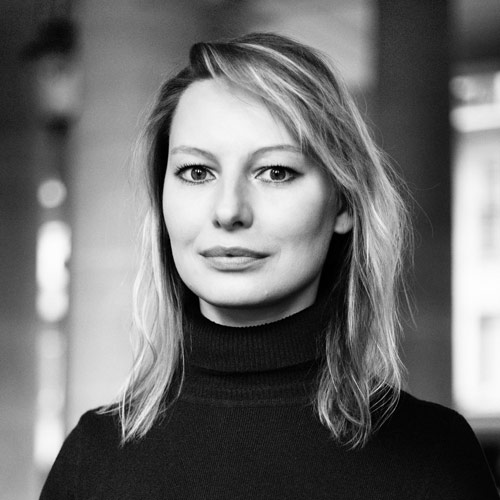 Natalya Saprunova, born in 1986 in Murmansk in the Arctic region of Russia, is a documentary photographer now based in Paris and a member of the Zeppelin agency. During her graduate studies as a French teacher in Russia, she worked as a photojournalist for the Murmansk Messenger daily newspaper. Arriving in France in 2008, she studied and worked in marketing for eight years in Paris. At the end of 2016, she gave up her permanent contract to return to photography, a field that has fascinated her since her early childhood. Naturalized French and graduated in Documentary Photojournalism from the EMI-CFD School in Paris in 2020, she continues to explore the issues of modern society related to identity, integration, climate change, youth, femininity, and spirituality. Passionate about the transmission of knowledge, she has been teaching photography at the Graine de Photographe school in Paris since 2016.
Natalya Saprunova, born in 1986 in Murmansk in the Arctic region of Russia, is a documentary photographer now based in Paris and a member of the Zeppelin agency. During her graduate studies as a French teacher in Russia, she worked as a photojournalist for the Murmansk Messenger daily newspaper. Arriving in France in 2008, she studied and worked in marketing for eight years in Paris. At the end of 2016, she gave up her permanent contract to return to photography, a field that has fascinated her since her early childhood. Naturalized French and graduated in Documentary Photojournalism from the EMI-CFD School in Paris in 2020, she continues to explore the issues of modern society related to identity, integration, climate change, youth, femininity, and spirituality. Passionate about the transmission of knowledge, she has been teaching photography at the Graine de Photographe school in Paris since 2016.
First Place: ZEKE Award for Systemic Change
Sarah Fretwell
Guardian of the Forest
Peru
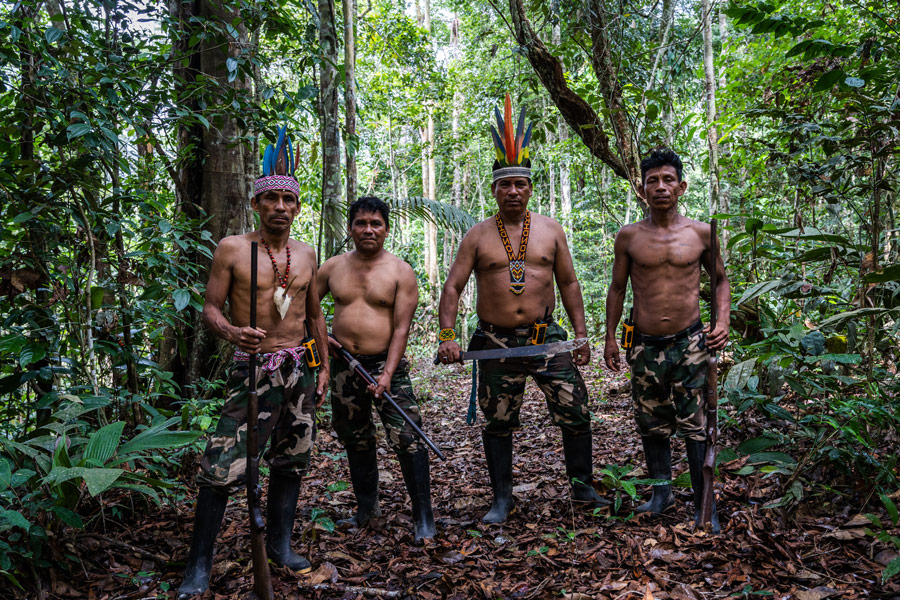
At the end of their patrol, the Santa Rosillo Forest Guardians strip down, put on a few traditional accents, and excitedly ask for a portrait. They are proud of what they do and the status it has given them in the community. Since being recognized by local officials, it has forced the campesinos to treat them and the land with more respect. With so much out of their control, the patrol has been an opportunity for empowerment and self-determination. This image was taken in the buffer zone of Cordillera Azul National Park outside of Santa Rosillo, San Martin, Peru in December 2022. Photo by Sarah Fretwell.
Apu Quinto Inuma was a former lumber trafficker turned park ranger turned rogue Forest Guardian. He became a tireless international advocate for the environment and Native rights and his community of Santa Rosillo in the Amazon of Peru.
To prevent the devastation of land, logging, and drug cartels operating in neighboring communities, Quinto organized other Natives to patrol the forest even after the government denied their ancestral rights to the territory. They worked to protect their children's future and “their brothers who could not speak” — the trees of the forest.
With old guns, machetes, and rubber boots, the volunteer Forest Guardians risk their lives to monitor the buffer region of Cordillera Azul National Park beside their village in San Martin. On patrols, they look for new burn and grow areas, document it with cell phones, and send the notes back to local officials. Struggling to survive in this remote region, many people here work for illegal logging and drug cartels.
In November of 2023, Quinto was shot and killed in retaliation for his environmental work.
His spirit still lives on in the forest.
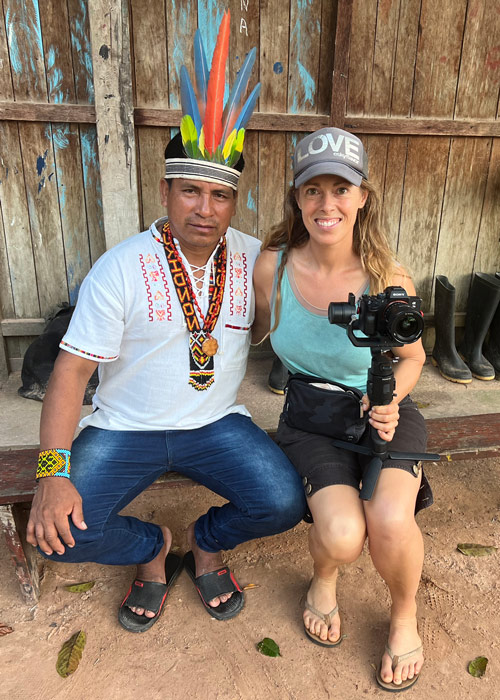 Political scientist, director, and photographer, Sarah Fretwell looks deeper into the intersection of the environment, people, and business with one question: “What if the new bottom line was love?”
Political scientist, director, and photographer, Sarah Fretwell looks deeper into the intersection of the environment, people, and business with one question: “What if the new bottom line was love?”
Her award-winning work explores the lives of everyday people with extraordinary stories. Her storytelling creates the human connection needed for understanding, international engagement, and solutions for change.
Clients, publications, and exhibits include The World Bank Group, United Nations, USAID, USAID Indonesia, Tara Expeditions Foundation, BioCarbon Fund, SXSW Interactive, TEDx, The Royal Academy of Engineering, The Africa Prize for Engineering Innovation, Human Rights Watch, CNBC, Bloomberg, Business Insider, Social Documentary Network (SDN), Blue Earth Alliance, and Photoville.
Sarah is a graduate of VII Masterclass, Arles 2022 - 2023. She is a current documentary storyteller with The Center: Visual Storytelling and Documentary Photography Projects.
Honorable Mentions are awarded to:
William Daniels
The Stateless
Lebanon, Dominican Republic, Nepal, Ivory Coast, Bangladesh
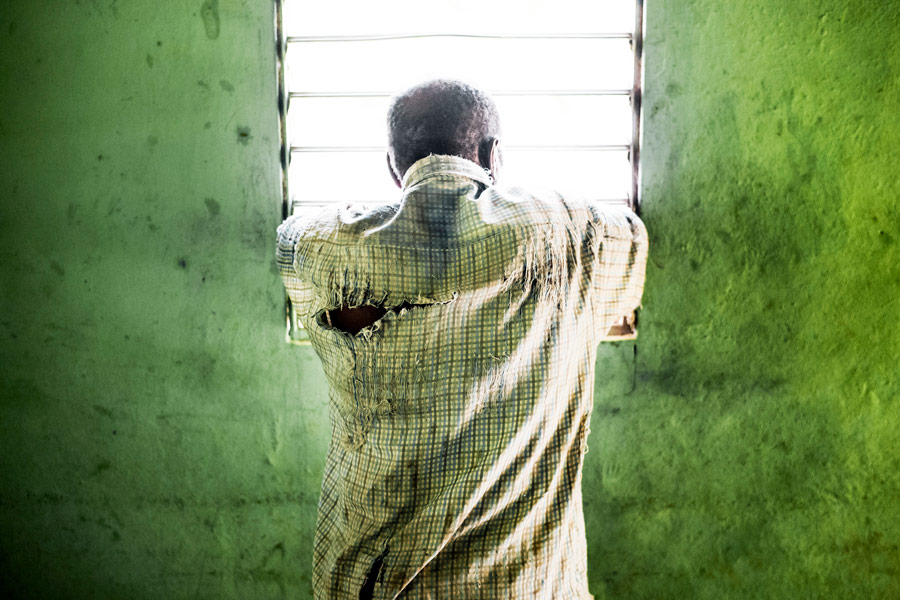
Central Dominican Republic. Haitian descendant in a batey (settlenebt around a sugar plantation) owned by the Central Romana Corporation (the biggest sugar cane company in the DR). Recently the US banned any sugar coming from Central Romana for suspicion of forced labor. Photograph by William Daniels.
What happens when a person’s identity is negated to the point that they are deprived of any official existence? This person becomes stateless: they do not belong to any country – not even the one they consider their own. Most of the world’s 10 million stateless people do not feature in any census. They are seldom refugees: many have never left the land on which their ancestors were born.
The question of who belongs and who does not, who has access to resources and who should be denied them, is a hot topic in our times of pervasive identity crises and populism fueled by social media. The philosopher Hannah Arendt wrote that citizenship is “the right to have rights”. In “The Origins of Totalitarianism”, she described the process of dehumanization of stateless people: when “Others” are created and differences are exploited, citizenship becomes an instrument to deprive rights of those who could threaten political, ethnic, or economic interests.
This story by William Daniels explores stateless communities, or “at risk of statelessness” in six countries.
Max Cabello Orcasitas
Chungui Oronccoy: Scenes from the Peruvian Post Conflict
Peru
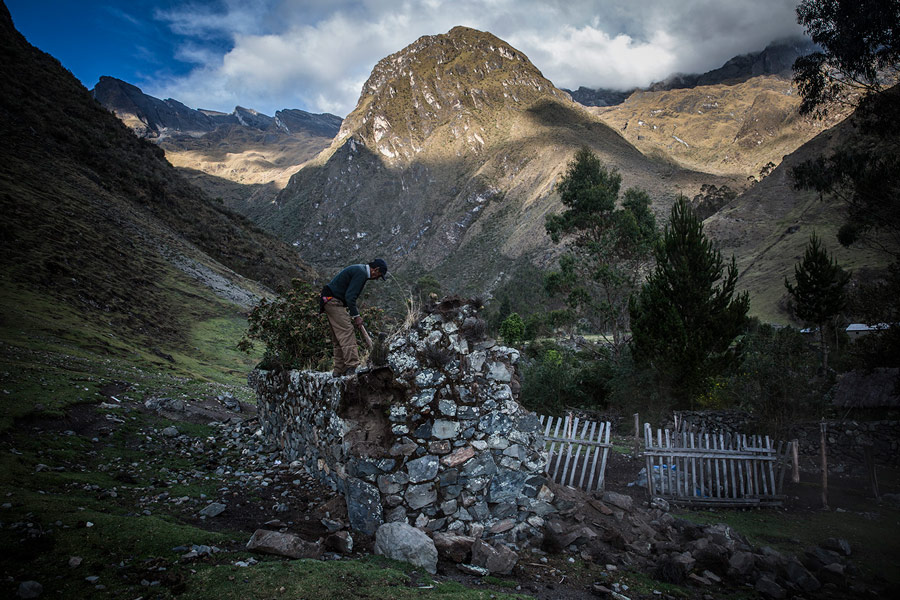
A relative of the Aspur Ccaicuri family removes stones from the wall of an abandoned house in the village of Totora to use in the construction of the tombs of Sabina Ccaicuri Castro and her children Mario, Amelia, and Yolanda Azpur Ccaicuri. Photograph by Max Cabello Orcasitas
The Peruvian territories of Chungui and Oronccoy, with just over a thousand square kilometers in the mountainous Ayacucho region, were the scene of multiple massacres caused by the Maoist-inspired Sendero Luminoso (Shining Path) organization and the Peruvian military and police forces during the armed conflict that devastated Peru between 1980 and 1995. 16% of its inhabitants were murdered: almost 1,300 victims; buried in 300 mass graves many of which have already been exhumed.
These tragedies were not isolated events. Ayacucho was the region that concentrated the highest number of deaths and disappearances reported to the national Truth and Reconciliation Commission: of a total of 69,000 victims throughout Peru, 26,000 deaths (almost 40%) occurred in this region.
Forty years later, Chungui and Oronccoy remain marginal areas. Both share extreme poverty and the precariousness of basic health and electrical services. Although they have experienced the restoration of their life rituals, the slow process of exhumations and search for the bodies that disappeared during those brutal years continues, waiting to be recognized by their relatives, most of whom are orphans and survivors of the conflict.
Maurizio Di Pietro
Turkana's Resilience
Kenya
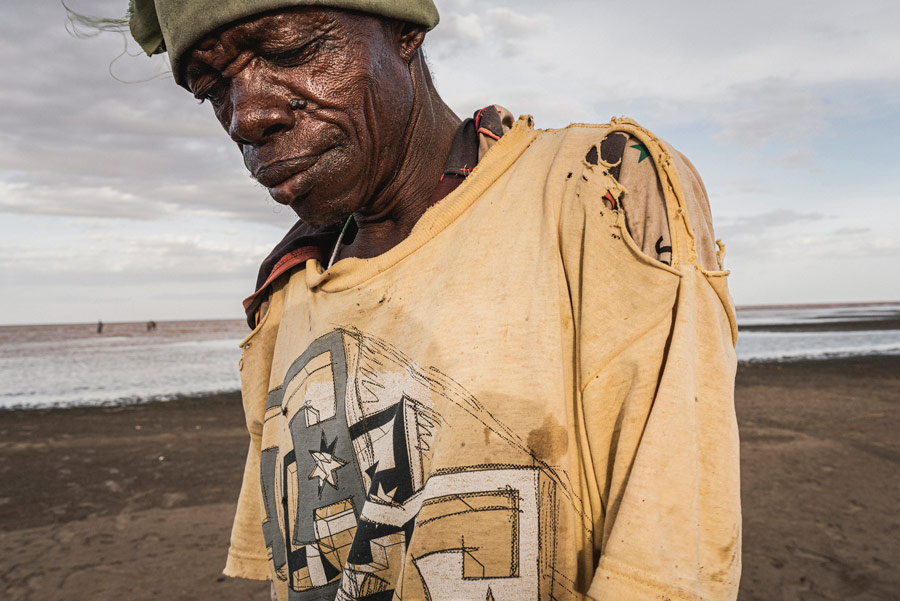
Kenya, Turkana County, Nariokotome, May 2017. A fisherman on the shores of Turkana Lake is resting after fishing. According to the NCCAP, more than 60% of the inhabitants of the Turkana district are pastoralists, but about 10% of people fish in the waters of the lake. Indeed the Turkana have adapted by diversifying their livelihood strategies as one way of reducing vulnerability to endemic conflicts and drought.
Turkana, in northwest Kenya, is the poorest and least developed county in the ASALs (Arid and Semi-Arid Lands). Almost all of the inhabitants of the Turkana district are pastoralists, so their survival depends entirely on livestock, natural resources for food, and daily activities.
In the last few decades, due to climate change, the air temperature increased by about three degrees, while more frequent and prolonged droughts have reduced the natural resource base. Pasture resources for livestock have been dramatically reduced, encouraging those closest to Lake Turkana to turn to fish as an alternative livelihood.
The area is the fuse of violent conflict. Indeed the proliferation of illegal arms from southern Sudan and the reduction of natural resources has contributed to the escalation of insecurity along the area's shared borders with Ethiopia, Sudan, Uganda, and other counties in Kenya such as Pokot and Marsabit, causing the death of hundreds of people every year.
Isabella Franceschini
The Leap of Fish that Dreams of Flying
Italy
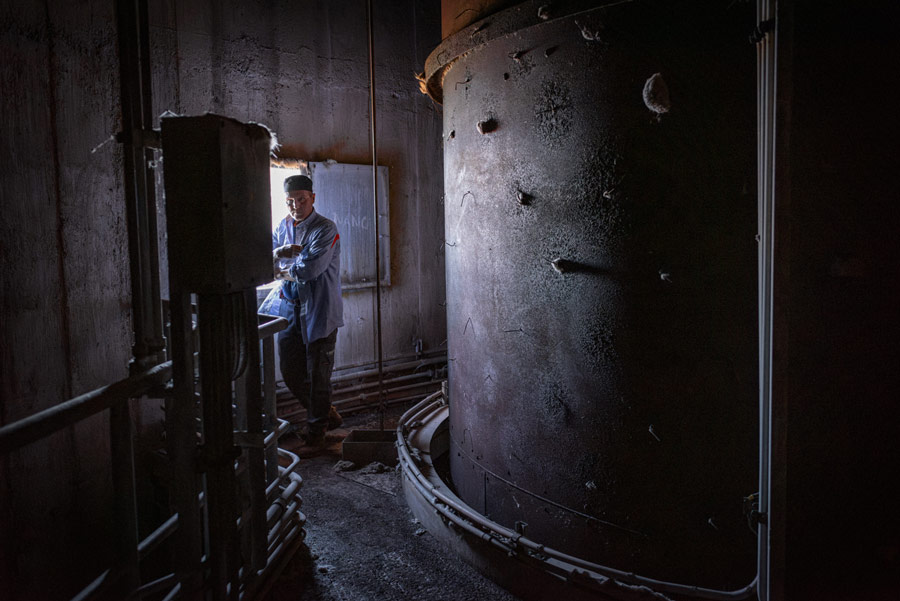
Porto Tolle, RO, June 2023. The interior of the chimney of the decommissioned Enel thermoelectric power plant located in Polesine Camerini, where the emptying works are currently underway. A study commission from the University of Padua is assessing whether to preserve this extremely tall structure, which could pose maintenance and, above all, safety issues for guests of the future tourist facility. From the top of the terrace, 250 meters high, it is possible to see, beyond the Adriatic, Istria and Dalmatia. Photograph by Isabella Franceschini
Since 2015, the UNESCO Po Delta Biosphere Reserve has been undergoing a significant transformation with the decommissioning of the colossal Italian thermal power plant in Polesine Camerini into an innovative and eco-sustainable tourist hotspot geared toward environmental conservation and local employment. This redevelopment project spans 300 hectares and it is part of the Futur-e project, led by the Enel Group, which aims to repurpose 23 disused industrial sites and a former mining area that that have completed their role in the energy system. Between 2021 and 2023, the work documented the economic and social fabric of this fragile area, historically threatened by hydraulic dangers such as floods and subsidence. Here, the complex relationship between river, land, and sea has influenced human settlements, engaged in uncertain adaptation to the morphology of an ecosystem in continuous evolution, further exacerbated by sudden climate change. We are currently experiencing a historical period of profound transformation that urges us to reconsider our way of life, placing increasing emphasis on renewable energies and prioritizing pathways towards a zero-emission energy system.
Rohingyatographer Collective
Through Rohingya Eyes: A Journey of Resilience
Bangladesh
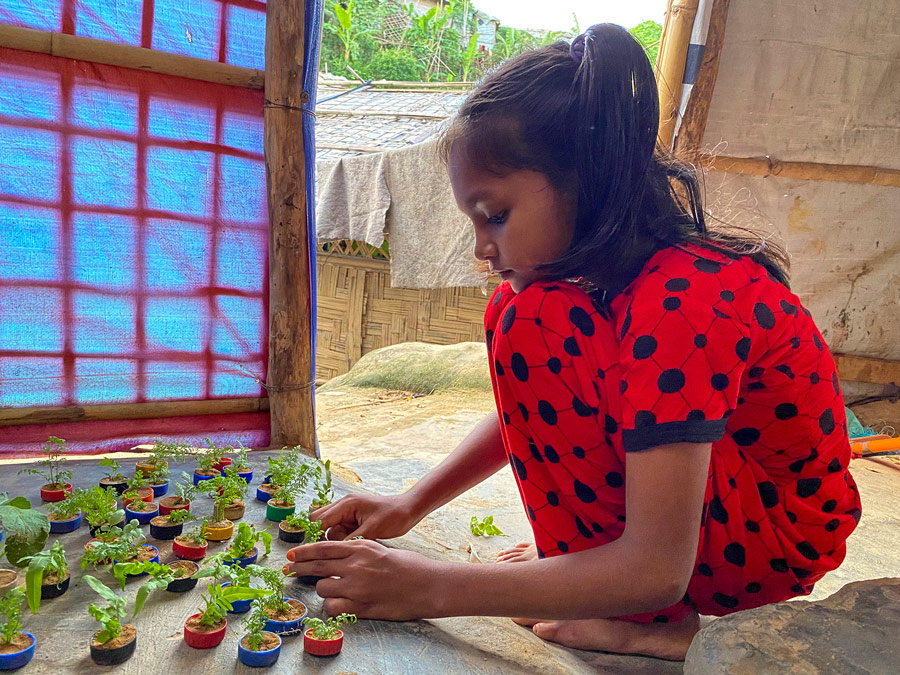
Nur Asma is 10 years old. She lives in the refugee camp with her family. Nur Asma loves studying and being creative crafting utensils out of mud and bamboo. She is introverted and plays silently by herself. She wants to create something new by herself and doesn’t want to copy others. She loves nature and cares for the earth. She hopes to have many trees in the camp because, after the fire incidents, many trees burnt down and people suffer a lot with the unbearable heat, especially in summer. She was inspired by her grandmother who also plants trees near their shelter, so she is doing the same though it seems like she is playing. ‘When I took this photo, I was amused seeing her playing like this with the trees. Can you imagine she collected all these water bottle tops to plant trees in them?’ © Ishrat Fori Imran
This exhibit presents a compelling retrospective of Rohingyatographer’s work, encompassing the profound journey of the Rohingya people from 2017 to 2023. This collection of photographs captures the raw essence of refugee life, blending stark realities with fleeting moments of hope and resilience. It portrays the struggles against natural and human-made adversities, the poignant resilience amid the genocide's aftermath, and the vibrancy of Rohingya traditions and culture. Through children's eyes, it explores imagination and innocence in harsh conditions. Each image, a blend of shadow and light, narrates a story of survival, communal bonds, and the relentless pursuit of a future filled with dignity and peace. This collection is not just a chronicle of displacement but a testament to the unyielding human spirit facing profound challenges.
Rohingyatographer is more than a photography project, it is a platform of narrative justice for Rohingya refugees. In a world where identity often defines existence, many Rohingya are marginalized and voiceless. However, through the photographic magazine Rohingyatographer, they recover parts of their lost identity, sharing their stories of resistance and hope even in the midst of despair.
Jurors
Barbara Ayotte. Communications Director for Social Documentary Network and Editor of ZEKE Magazine. Senior Director of Strategic Communications at GBH.
Dudley M. Brooks. Deputy Director of Photography for The Washington Post, where he manages the creative strategy and production of photo-oriented content for the Features, Local and Sports departments.
Greig Cranna. Professional photographer and the founder and director of BRIDGE, a photography gallery in Cambridge, Massachusetts.
Lisa DuBois. New York-based ethnographic photojournalist and curator and Diversity Advisor with the Social Documentary Network.
John Heffernan. More than three decades of experience in non-profit leadership roles on five continents and is currently the president of the Foundation for Systemic Change.
Michael Itkoff. Publisher, creative consultant and cofounded the internationally-celebrated art book publishing house, Daylight.
Ed Kashi. Photojournalist, filmmaker, and educator dedicated to documenting the social and political issues that define our times.
Maria Monteleone. Enterprise Assignment Photo Editor for Bloomberg News, producing multimedia enterprise stories, globally.
Maggie Soladay. Senior Photography Editor at the Open Society Foundations in New York.